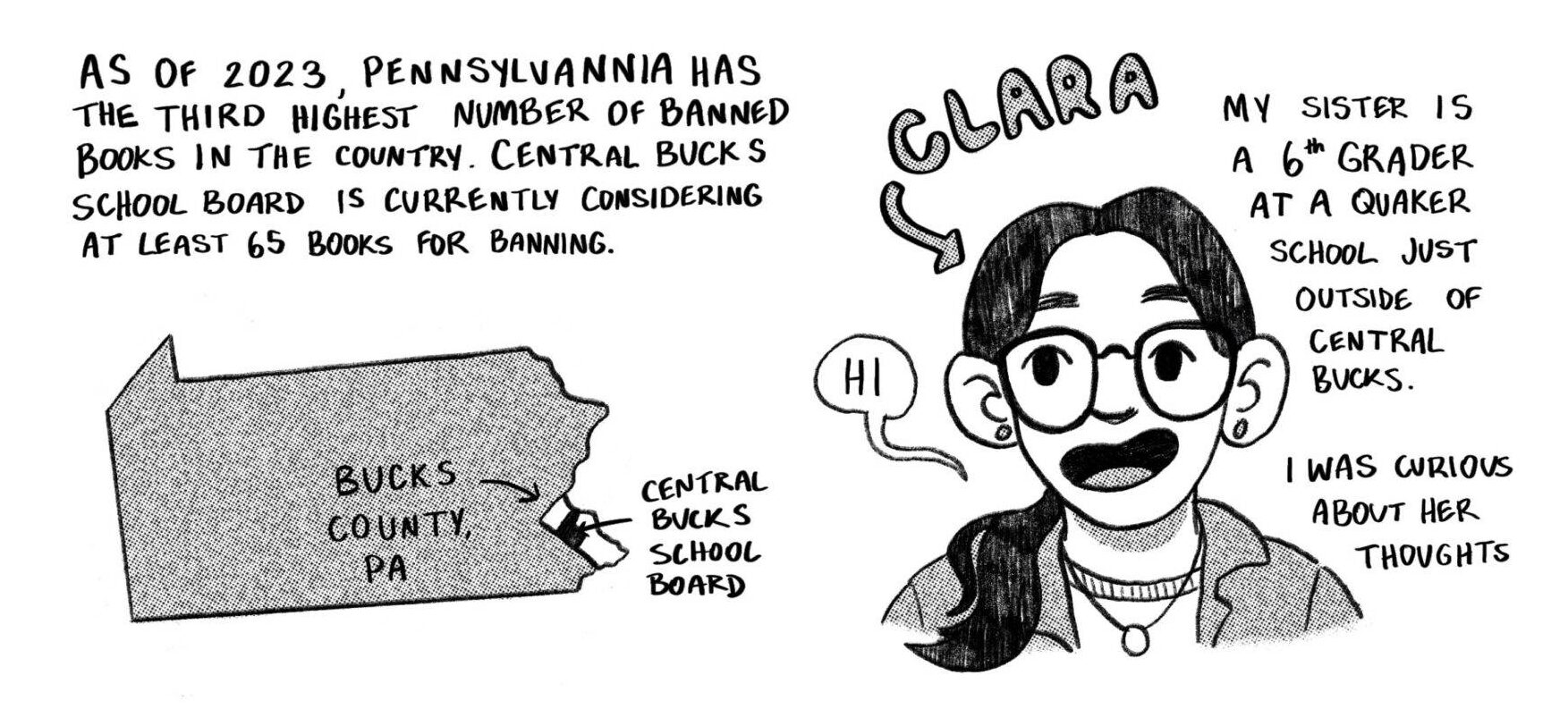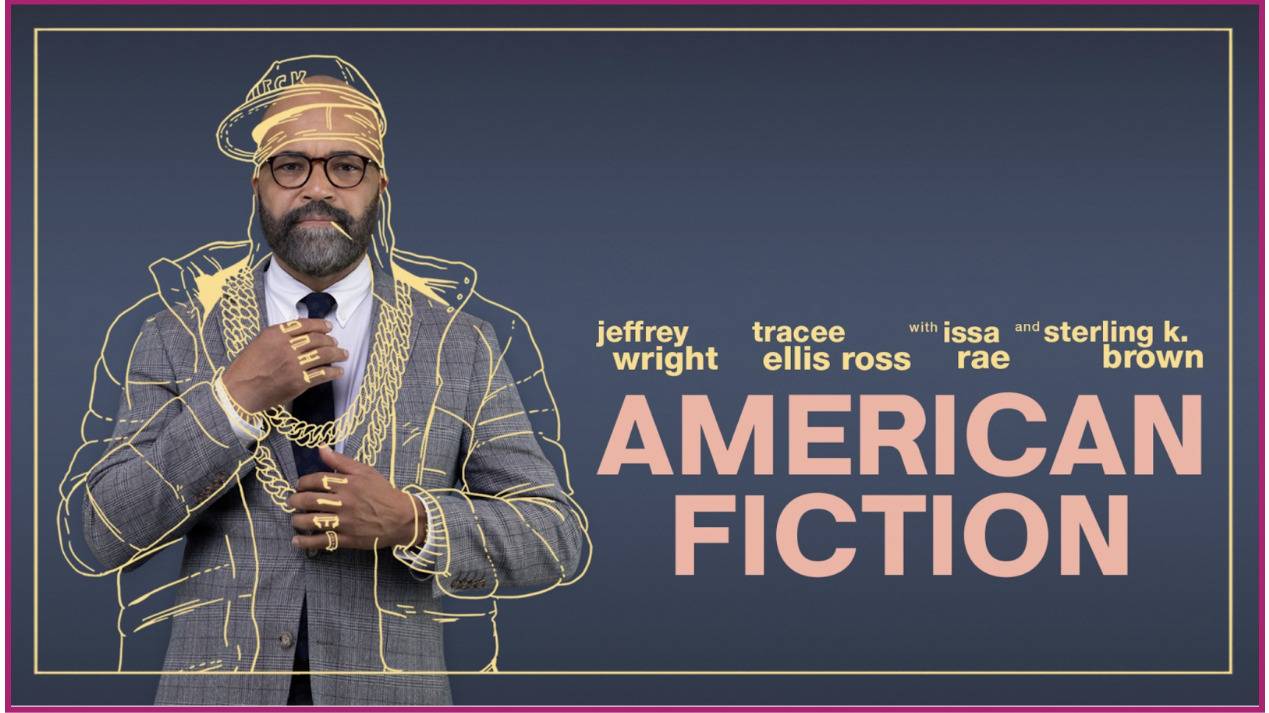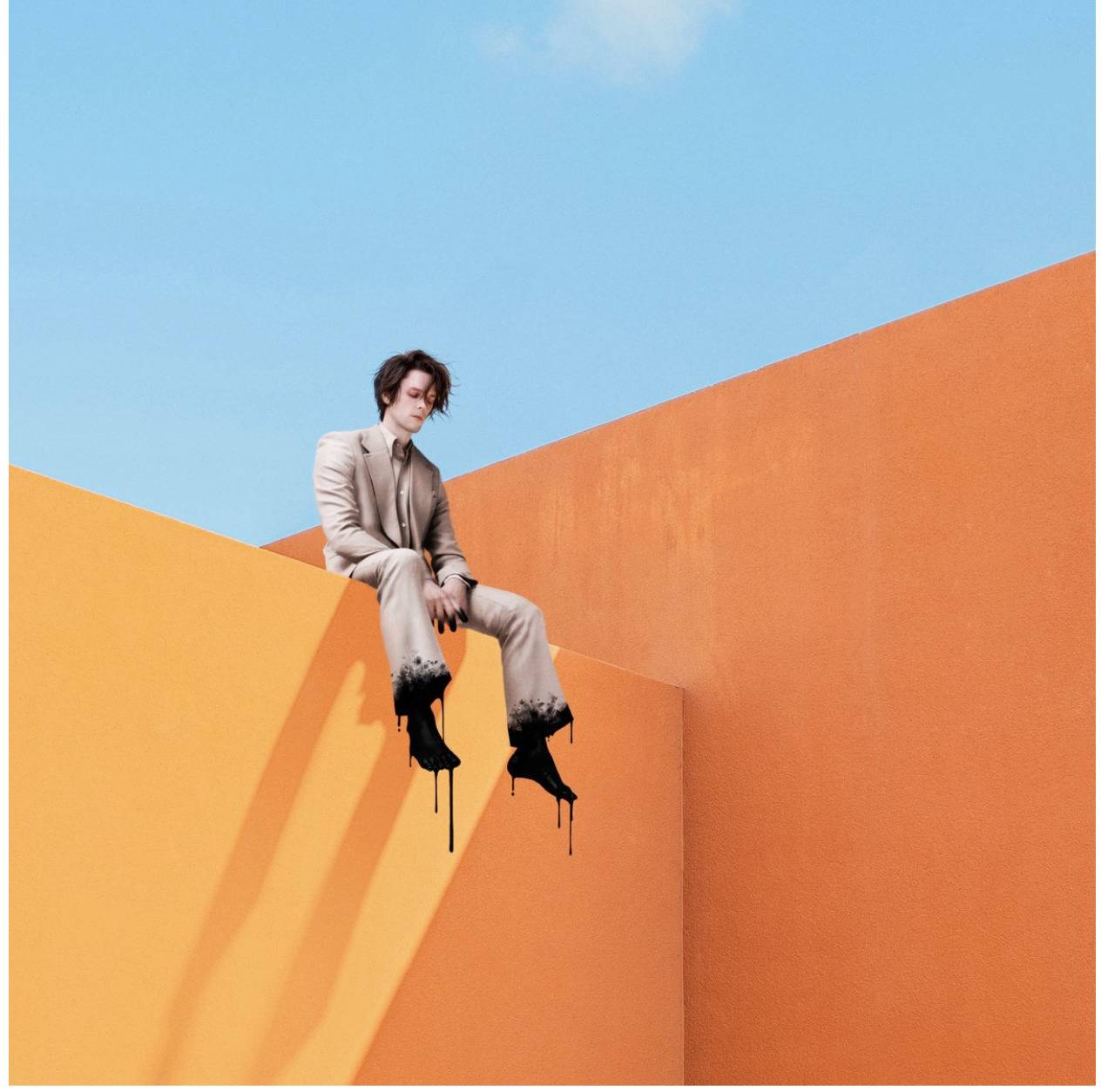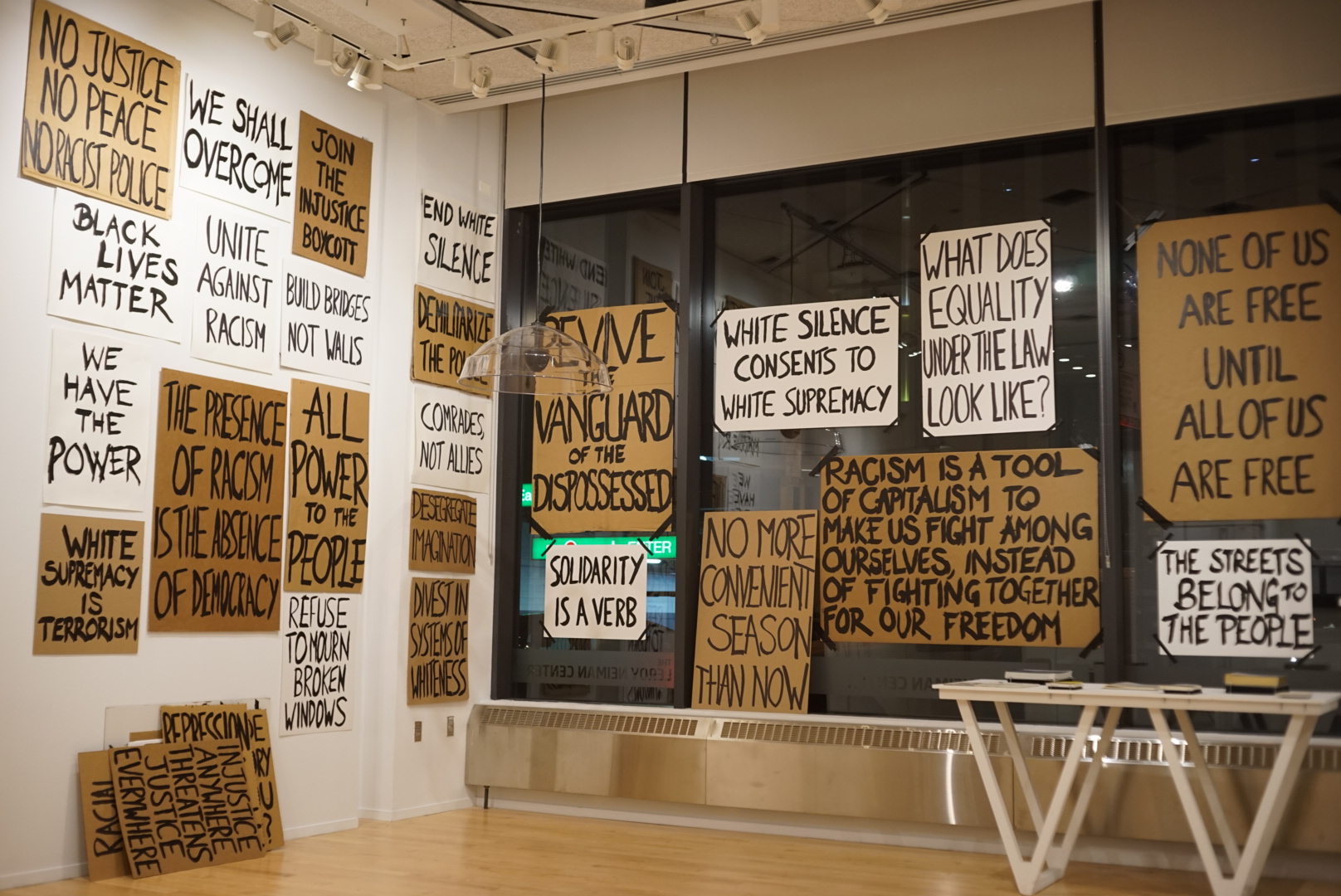
Joshi Radin and Greg Ruffing, “What Does Accountability Look Like?” 2016. Photo courtesy of SUGs.
“The personal is political,” a phrase first coined as a rallying slogan in the late 1960s to describe the complex formation of the era’s identity politics, comes to mind when moving through “Talking Points,” the Student Union Galleries’ (SUGs’) second show of its fall season. The year of 2016 — a year of politics most foul — has also prominently echoed this notion, for better or for worse. Rather than voting for candidates, it seems, we are voting for our own narratives and personal histories.
SUGs’ decision to curate something politically-themed for the end of October and into November was foreseeable. However, the expectation for a political art exhibition this late in the electoral game (November 8 is just around the corner) is along the lines of “been there, seen that.” We’ve seen Donald Trump naked, we’ve seen Hillary Clinton as a pawn of Wall Street, and we’ve witnessed artists loading on narratives that are anything but their own. Take, for example, Ai Weiwei’s shockingly distasteful piece responding to the Syrian refugee crisis, where the artist posed as a drowned child. If it’s excessive commentary, we’ve already heard it; if it’s appropriation, we don’t want it. We are tired of the expected; what was once revolutionary now seems to be just as strategically placed and pandering as a YouTube ad.
“Talking Points,” however, is exceptionally unexpected. Rather than taking on an assumed dialogue revolving around the unprecedentedly wide Clinton/Trump divide, the exhibition features artists wrestling with their own identities, histories, and personal political investments. The result is an elegantly complex narration of complementary and competing artworks, all highlighting significant political matters and how they affect individuals.
Curated by the SUGs directorial team consisting of McCoy Crawford, Emily Fenn, Emily Monasterio, Jameson Paige, and Michael Powell, “Talking Points” is, as its curatorial statement describes, “a constellation of our political reality.”
The first, effectively striking piece that greets viewers at the entrance of the LeRoy Neiman Center Gallery is Rami George’s video installation, “the mediterranean sea from the banks of lebanon, re: ali, krystel, nathalie, rasheed, visso, vrouyr.” Consisting of video clips of the Mediterranean Sea from the shores of Beirut, Lebanon, sent to George by various friends and family members, it acts as an ode to both George’s Lebanese background and the international connections seas and oceans inadvertently create.
That video is one member of a trio of works by George that grapple with his ethnic identity, immigration, and issues affecting the Middle East and beyond. The nostalgic “my mother and her sister always argued in arabic, i never understood what was said” plays clips from a Lebanese soap opera on an old television and explores familial history and the irreplaceable role of language in creating personal connections. This work is juxtaposed with a much smaller piece: a panoramic video loop of sites in the Gaza Strip. Since the area lacks access to Google Maps, the video is composed entirely of user-made images.
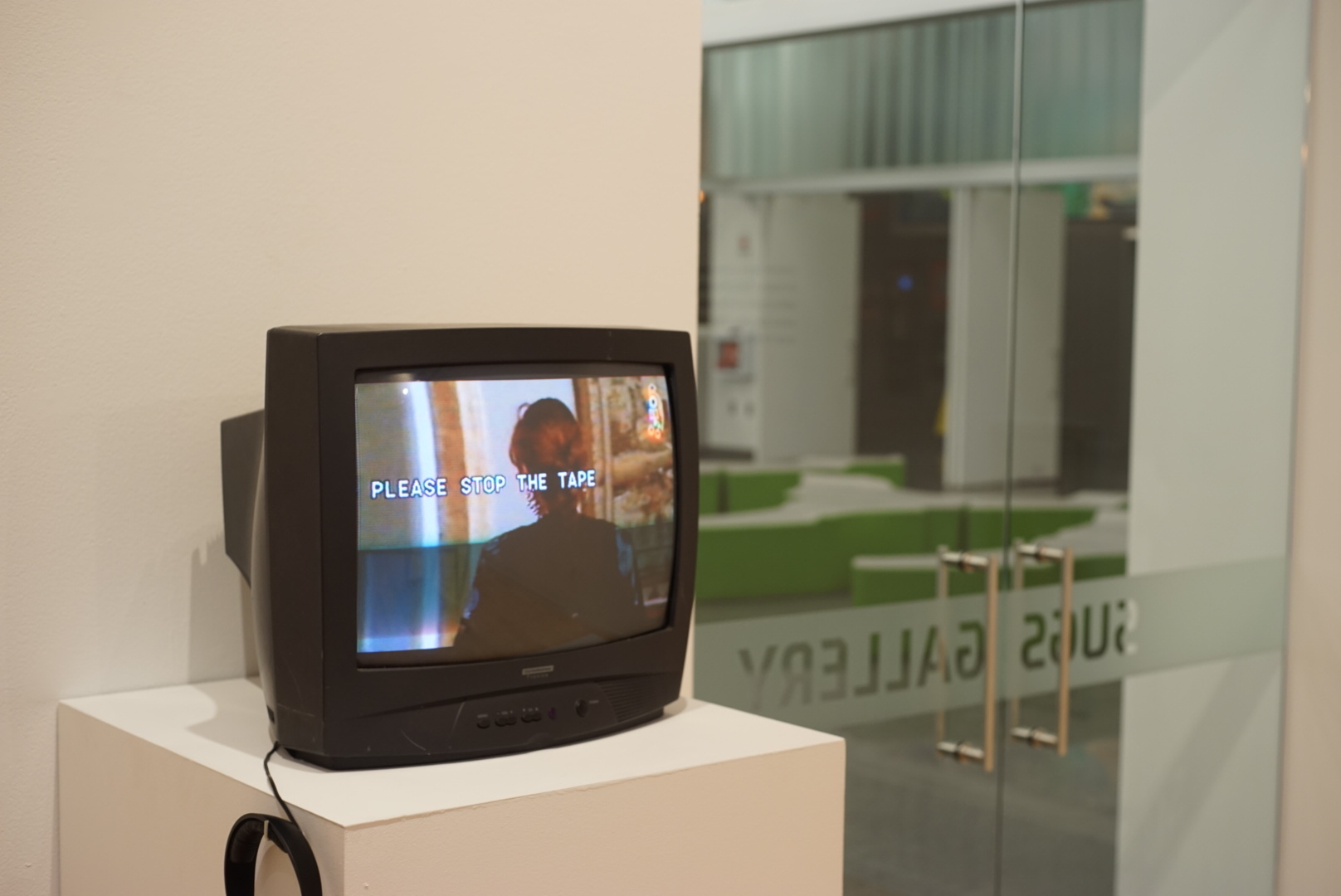
Rami George, “my mother and her sister always argued in arabic, i never understood what was said,” 2016. Photo courtesy of SUGs.
An equally engaging and visually jarring piece by Cassandra Davis (“Portraits of Christian Evangelical Leaders: Franklin Graham, James Dobson, Pat Robertson, Mike Bickle, and Ken Ham”) involves handwoven jacquard portraits of prominent Evangelical men and a taxidermic elk head (what else?) Davis borrowed from what she described in the gallery preview as “chilling memories” of her Christian Evangelical upbringing, and the difficulties she faces in confronting the past’s narrative as it coexists with her present one.
In the back of the gallery, the large-scale “What Does Accountability Look Like?” by Joshi Radin and Greg Ruffing attempts to examine the types of anti-racist and radical activism white people can and should partake in. The installation works together with an audio recording vocalizing failures of the criminal justice system and systematic and institutional racism.
The dialogues between artists and viewers, especially white artists and white viewers, are crucially effective when dealing with issues like the absolute need for groups like Black Lives Matter and the fraught realities of America’s core culture of racism; however, the relevant historical outline “Accountability” wants to present becomes somewhat lost. The work’s premise — shown through protest signs affixed onto the gallery walls and windows, with slogans such as “THE STREETS BELONG TO THE PEOPLE” — is commendable, but seems to take a backseat, conceptually speaking, to the rest of the works in the gallery, despite having the most obvious physical presence.
Additional pieces in “Talking Points” are a visually jolting, metaphorically versatile sculpture and print work (“Red Chair,” “Twin Noose”) by Shavana Green; an interactive website (“www.unitedstatesofamericaelection2016.com”) by Felipe Steinberg; and a multidisciplinary installation by Marcela Torres, which pays tribute to her Mexican American heritage and to the Bracero program which brought her family to the United States. A second artwork by Radin and Ruffing, titled “Thoughts and Prayers,” skillfully and gracefully criticizes failures of governance using the framework of mass shootings and explores how media literally frames political rhetoric.
All these artists are working at a time when art on the national scale can speak as loudly or as softly as it so chooses. The contemporary political climate — a phrase thrown around in a number of contexts — leaves little room for civil discourse and mutual understanding. A show like “Talking Points,” which allows the viewer to slowly digest certain, contextualized ideas and connect those ideas to a broader global discourse, is as necessary as it is welcomed. (I’m speaking from the perspective of an exhausted political art consumer.) SUGs manages to create an alternative political space, and effectively carries across relevant ideas in a way that neither panders nor bores.
“Talking Points” is on view through November 2, 2016 at the LeRoy Neiman Center Gallery. On October 21, performances will be held at the LNC lobby and gallery featuring the performative works of Luis Mejico, Jae Hwan Lim, and Liz Vitlin. On October 28, there will be a screening of the documentary “in complete world” by Shelly Silver; and on November 2, SUGs will hold a closing panel discussion led by Marcela Torres.



